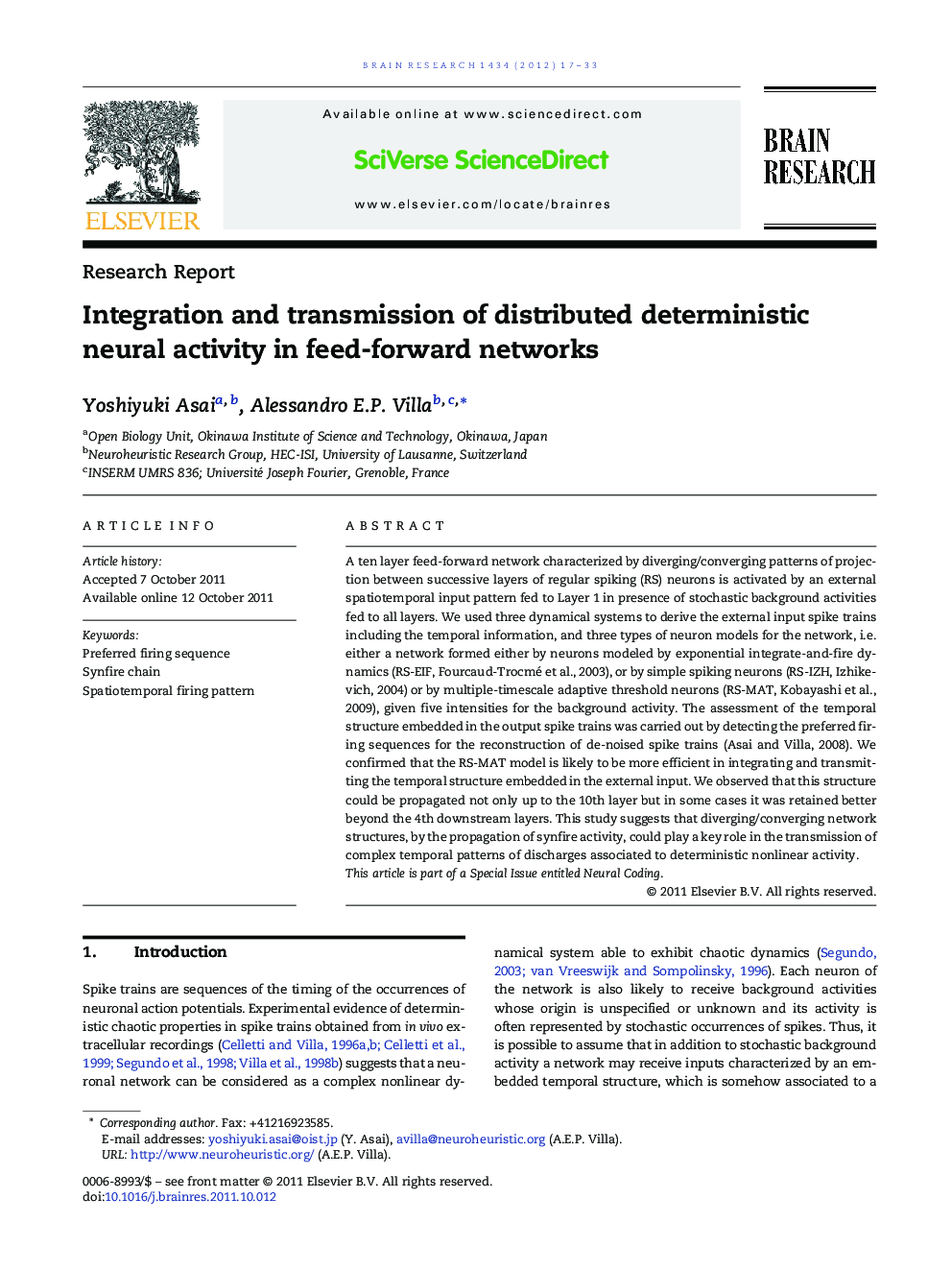| Article ID | Journal | Published Year | Pages | File Type |
|---|---|---|---|---|
| 6264490 | Brain Research | 2012 | 17 Pages |
A ten layer feed-forward network characterized by diverging/converging patterns of projection between successive layers of regular spiking (RS) neurons is activated by an external spatiotemporal input pattern fed to Layer 1 in presence of stochastic background activities fed to all layers. We used three dynamical systems to derive the external input spike trains including the temporal information, and three types of neuron models for the network, i.e. either a network formed either by neurons modeled by exponential integrate-and-fire dynamics (RS-EIF, Fourcaud-Trocmé et al., 2003), or by simple spiking neurons (RS-IZH, Izhikevich, 2004) or by multiple-timescale adaptive threshold neurons (RS-MAT, Kobayashi et al., 2009), given five intensities for the background activity. The assessment of the temporal structure embedded in the output spike trains was carried out by detecting the preferred firing sequences for the reconstruction of de-noised spike trains (Asai and Villa, 2008). We confirmed that the RS-MAT model is likely to be more efficient in integrating and transmitting the temporal structure embedded in the external input. We observed that this structure could be propagated not only up to the 10th layer but in some cases it was retained better beyond the 4th downstream layers. This study suggests that diverging/converging network structures, by the propagation of synfire activity, could play a key role in the transmission of complex temporal patterns of discharges associated to deterministic nonlinear activity.This article is part of a Special Issue entitled Neural Coding.
